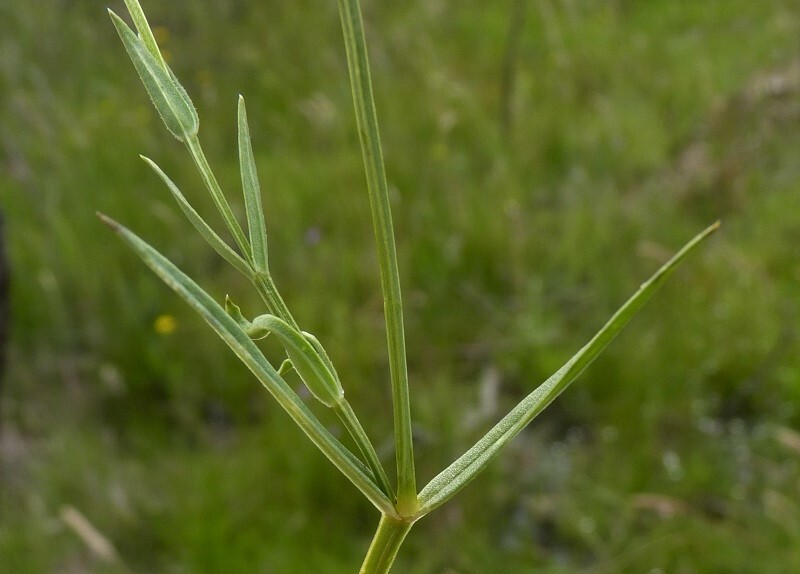Stellaria angustifolia
Hook. Swamp StarwortAnnual or semi-perennial, with slender taproot or horizontal rhizome, glabrous or scabrous; stems weak, straggling to ascending, single-stemmed or branched from base, 10–70 cm long. Leaves sessile, narrowly ovate to linear, (5–)10–50(–55) mm long, 1–2.5(–3) mm wide, margin entire or scabrous, apex acute but not pungent. Flowers solitary and axillary or in a (sometimes interrupted) monochasium or a dichasium; fruiting pedicel erect, (10–)15–55(–72) mm long; sepals (2–)3–8(–10) mm long, glabrous, apex acute, or subacute appearing hooded, not pungent, margins wide and scarious; petals 5, shorter than, equal to or exceeding the sepals; stamens 10. Capsule (3–)4–6(–7) mm long, 2–4(–4.5) mm diam., shorter than or exceeding sepals; valves slightly recurved at apex; seeds (4–)5–20(–34), (0.7–)1–1.4(–2) mm long, mid brown to ruby-red, tubercles medium to prominent in narrow flattened ridges, reticulate. Flowers Sep.–Nov.
MuM, Wim, GleP, Brid, VVP, VRiv, MSB, RobP, MuF, GipP, OtP, WaP, Gold, CVU, GGr, DunT, NIS, EGL, EGU, HSF, HNF, MonT, VAlp. Grows in swamps and seasonally flooded sites, and in damp areas of eucalypt forests.
Distinct from the European species Stellaria palustris Retz. which has erect, linear leaves; usually terminal, dichasial cymes; and inflorescence leaves ('bracts') markedly shorter, ovate to narrowly ovate and often scarious. 3 subspecies recognised, 2 present in Victoria, 1 presumed extinct.
Miller, C.H.; West, J.G. (1996). Stellaria. In: Walsh, N.G.; Entwisle, T.J., Flora of Victoria Vol. 3, Dicotyledons Winteraceae to Myrtaceae, pp. 233–240. Inkata Press, Melbourne.
 Spinning
Spinning


